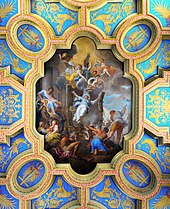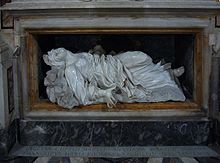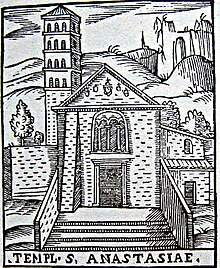
Francesco Marchetti Selvaggiani was an Italian cardinal of the Catholic Church who served as Secretary of the Congregation for the Propagation of the Faith, Vicar General of His Holiness, Secretary of the Holy Office, and Dean of the College of Cardinals. He was elevated to the cardinalate in 1930.
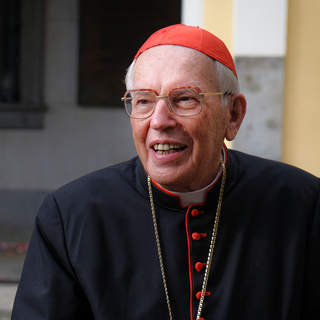
Giovanni Battista Re is an Italian cardinal of the Catholic Church whose service has been primarily in the Roman Curia. He was elevated to the rank of cardinal in 2001. He was prefect of the Congregation for Bishops from 2000 to 2010. As the senior cardinal-bishop in attendance, he chaired the March 2013 papal conclave to elect Pope Benedict XVI's successor. Pope Francis approved his election as Dean of the College of Cardinals on 18 January 2020.

The papal conclave held from 31 July to 4 August 1903 saw the election of Cardinal Giuseppe Melchiorre Sarto to become pope in succession to Leo XIII, who had died on 20 July after a 25-year-long pontificate. Some 62 cardinals participated in the balloting. Emperor Franz Joseph of Austria asserted the right claimed by certain Catholic rulers to veto a candidate for the papacy, blocking the election of the leading candidate, Cardinal Secretary of State Mariano Rampolla. Sarto was elected on the seventh ballot and took the name Pius X.
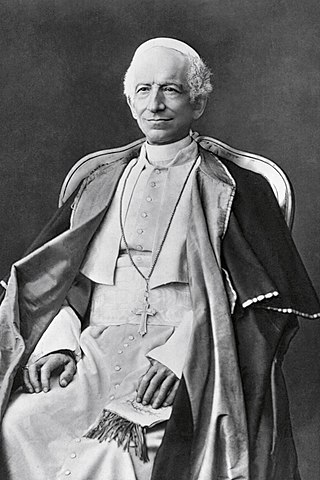
The papal conclave held from 18 to 20 February 1878 saw the election of Vincenzo Pecci, who took the name Leo XIII as pope. Held after the death of Pius IX, who had had the longest pontificate since Saint Peter, it was the first election of a pope who would not rule the Papal States. It was the first to meet in the Apostolic Palace in the Vatican because the venue used earlier in the 19th century, the Quirinal Palace, was now the palace of the king of Italy, Umberto I.

The Dicastery for Bishops, formerly named Congregation for Bishops, is the department of the Roman Curia of the Catholic Church that oversees the selection of most new bishops. Its proposals require papal approval to take effect, but are usually followed. The Dicastery also schedules the visits at five-year intervals that bishops are required to make to Rome, when they meet with the pope and various departments of the Curia. It also manages the formation of new dioceses. It is one of the more influential Dicasteries, since it strongly influences the human resources policy of the church.
A doctor of both laws, from the Latin doctor utriusque juris, juris utriusque doctor, or doctor juris utriusque, is a scholar who has acquired a doctorate in both civil and church law. The degree was common among Roman Catholic and German scholars of the Middle Ages and early modern times. Today the degree is awarded by the Pontifical Lateran University after a period of six years of study, by the University of Würzburg, and by the University of Fribourg, as well as the University of Cologne.
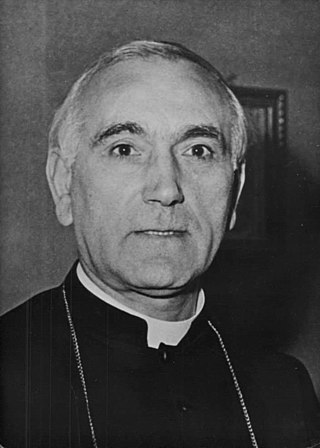
Carlo Confalonieri was an Italian cardinal of the Roman Catholic Church. He served as prefect of the Congregation for Bishops from 1967 to 1973, and dean of the College of Cardinals from 1977 until his death. Confalonieri was elevated to the cardinalate in 1958.
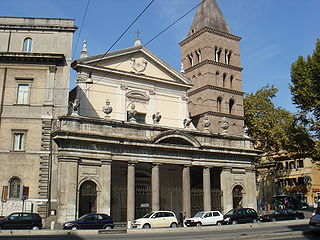
San Crisogono is a church in Rome dedicated to the martyr Saint Chrysogonus. It was one of the tituli, the first parish churches of Rome, and was probably built in the 4th century under Pope Sylvester I (314–335).

The cardinal electors in the 1963 papal conclave numbered 82, of whom 80 participated. This papal conclave met from 19 to 21 June 1963. This list is arranged by region and within each alphabetically.

The Suburbicarian Diocese of Palestrina is a Latin suburbicarian diocese centered on the comune of Palestrina in Italy.

The 1534 papal conclave was convened after the death of Pope Clement VII, and elected as his successor Cardinal Alessandro Farnese, who became Pope Paul III.

The 1572 papal conclave, convoked after the death of Pope Pius V, elected Cardinal Ugo Boncompagni, who took the name Gregory XIII.
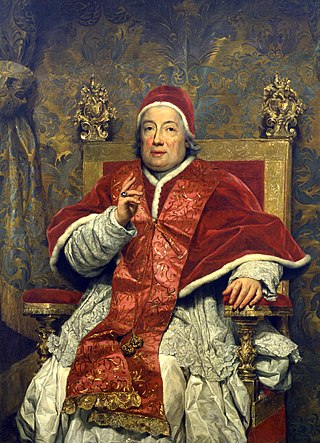
The 1758 papal conclave, convoked after the death of Pope Benedict XIV, elected Cardinal Carlo Rezzonico of Venice, who took the name Clement XIII.
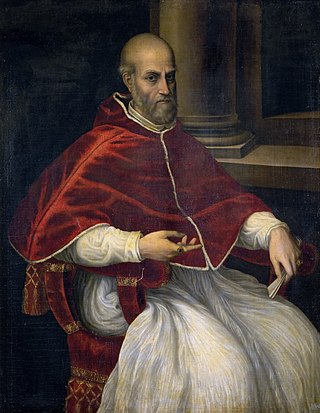
The April 1555 papal conclave was convoked after the death of Pope Julius III. Cardinals at the conclave generally grouped themselves into three major factions, according to their alignment with the French House of Valois, the Hapsburgs, or Italian states that remained independent of both major Catholic powers. After preparing a conclave capitulation that compelled whichever cardinal was elected pope to maintain neutrality in European wars, cardinals from the Holy Roman Empire joined in supporting the French faction's candidate, Cardinal Marcello Cervini. Cervini was elected Julius's successor, and chose to maintain his baptismal (birth) name as his papal name, becoming consecrated as Marcellus II.

The 1592 papal conclave elected Pope Clement VIII in succession to Pope Innocent IX.
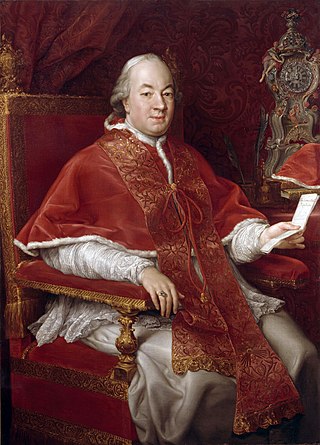
The 1774–75 papal conclave, was convoked after the death of Pope Clement XIV and ended with the election of Cardinal Giovanni Angelo Braschi, who took the name of Pius VI.
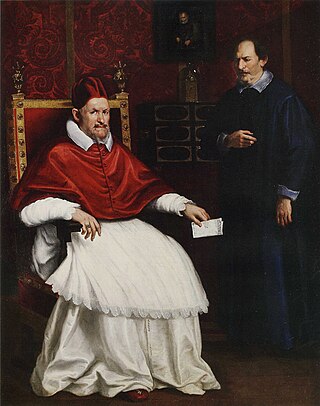
Pope Innocent X created 40 cardinals in 8 consistories:
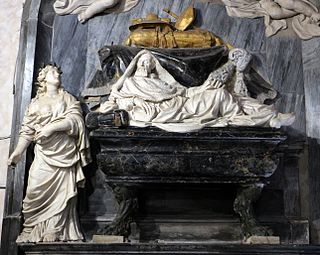
Francesco Cennini de' Salamandri was an Italian Catholic Cardinal.
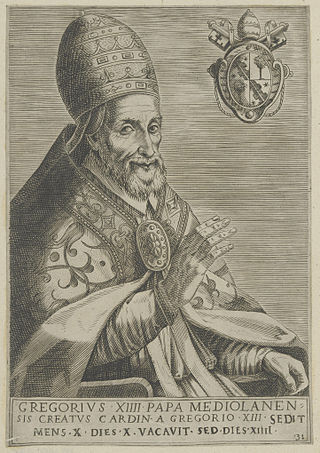
The October to December 1590 papal conclave was the second conclave of 1590, and the one during which Gregory XIV was elected as the successor of Urban VII. This conclave was marked by unprecedented royal interference from Philip II of Spain.

Pope Pius IV created 46 cardinals in four consistories:


